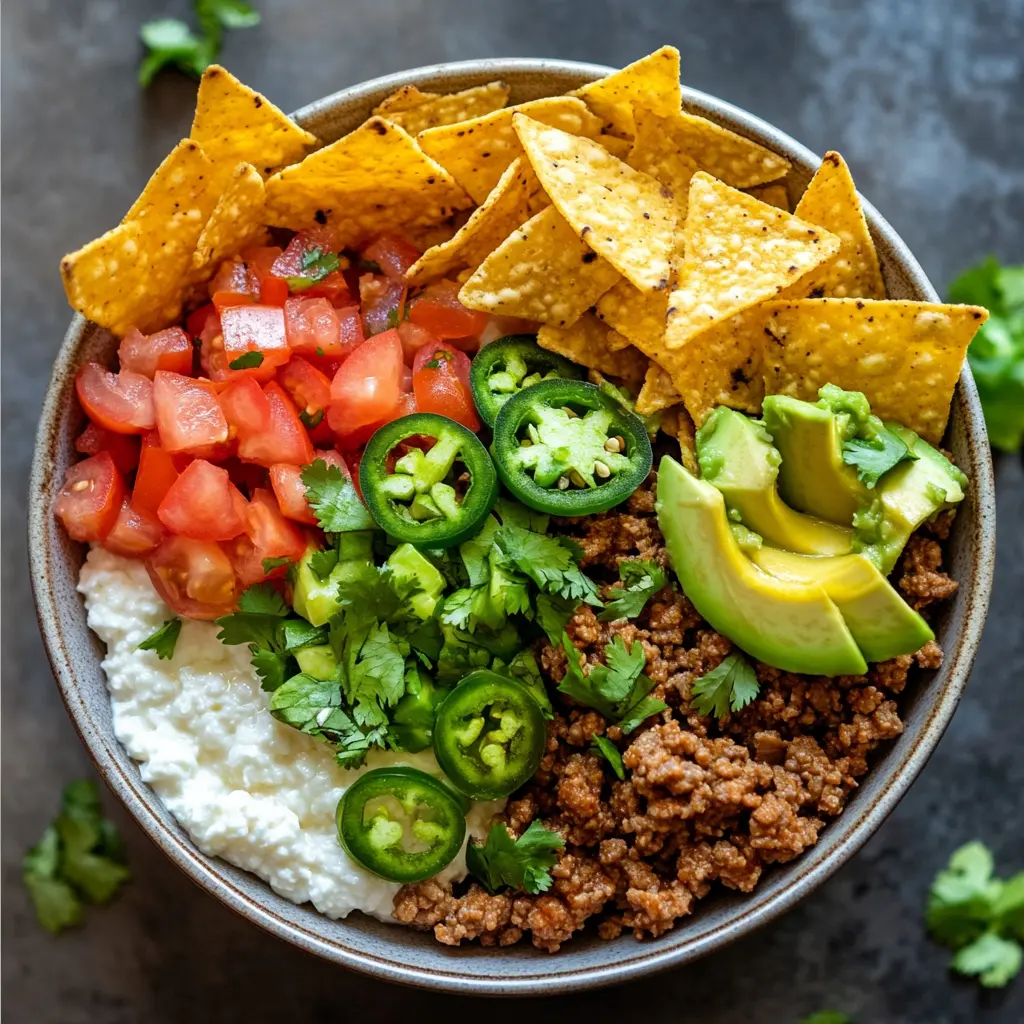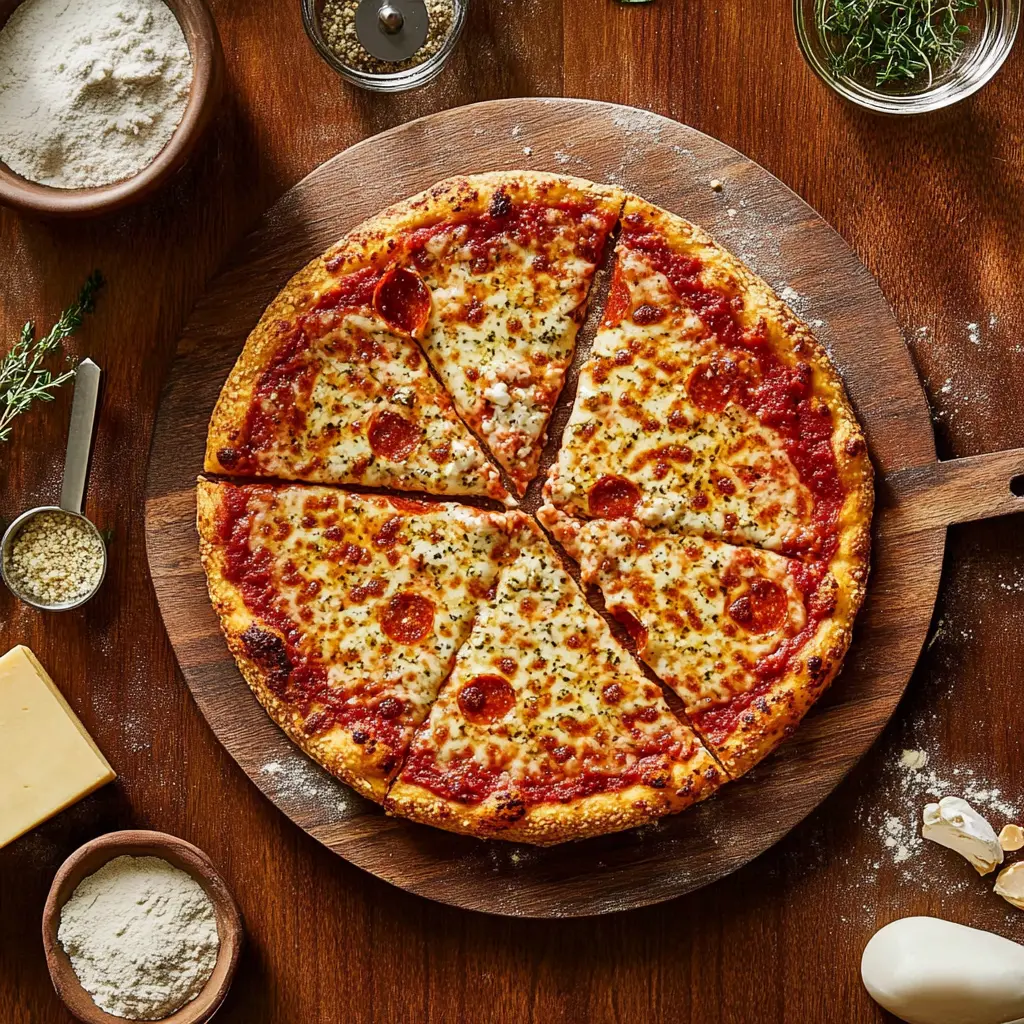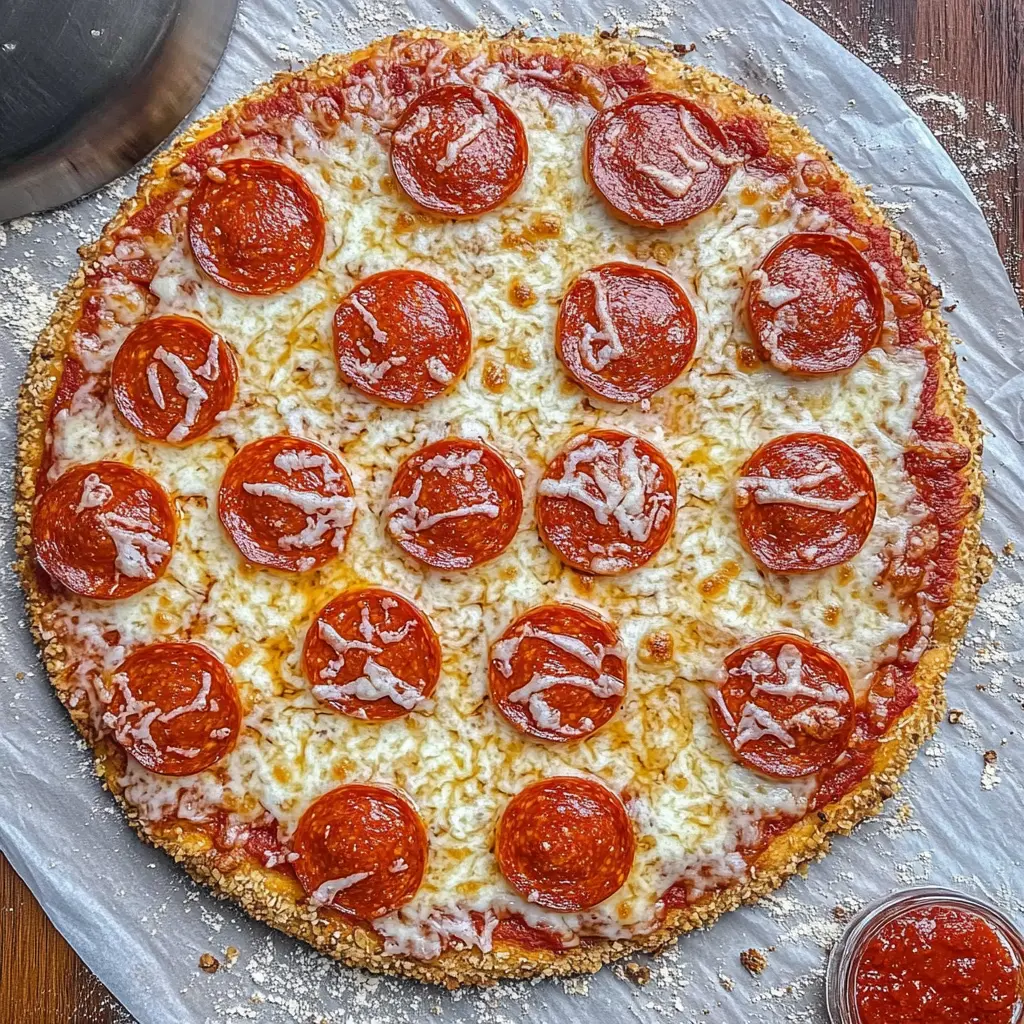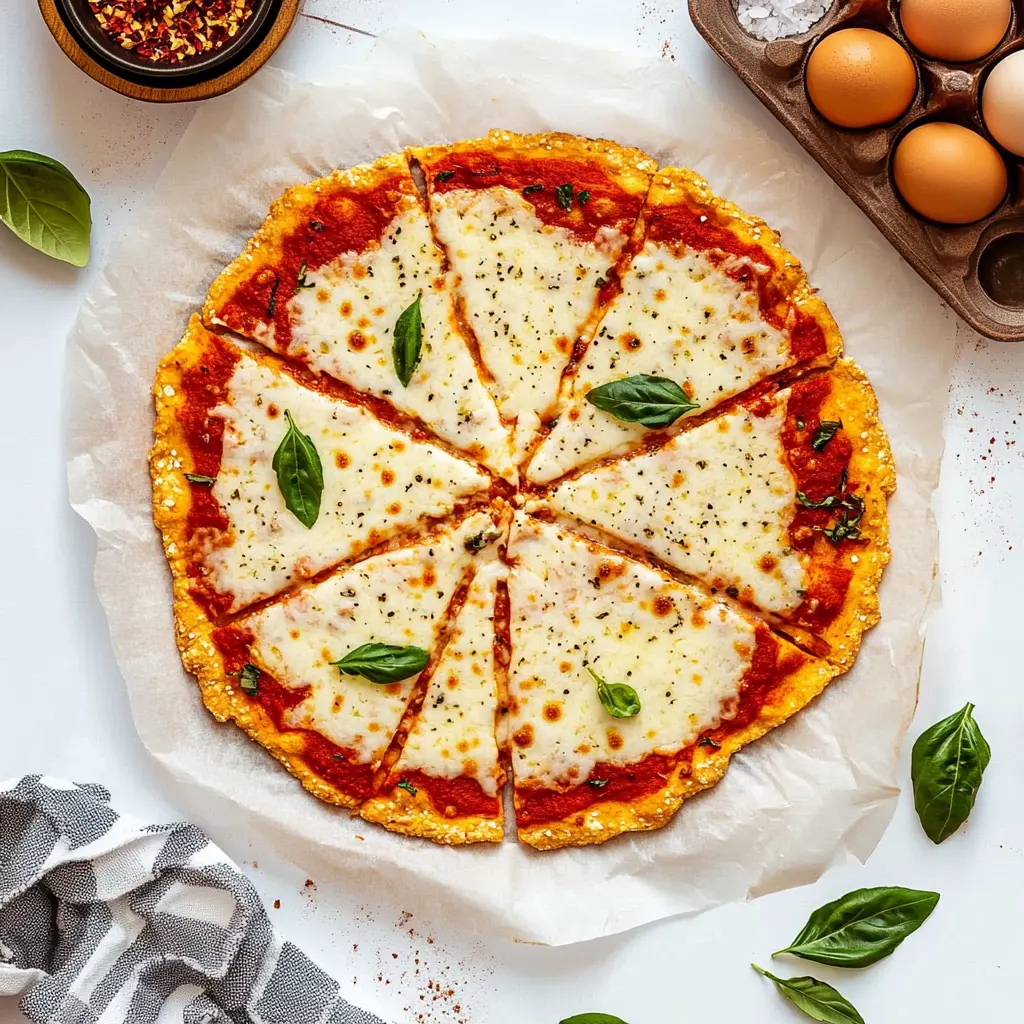If you’re searching for a way to enjoy pizza and still hit your protein goals, this is the recipe for you. In this article, you’ll discover how to make a high protein cottage cheese pizza crust that’s easy, delicious, and perfect for any night of the week. I’ll share the story behind this recipe, walk you through the ingredients, and answer your top questions about using cottage cheese in pizza crust. Whether you’re a home cook looking for something new or just want a healthier pizza option, you’ll find everything you need to make high protein cottage cheese pizza crust a regular part of your kitchen routine.
The Story & Intro: How High Protein Cottage Cheese Pizza Crust Became a Weeknight Staple
A Craving for Comfort, a Need for Protein :
I’ll never forget the first time I made high protein cottage cheese pizza crust. It was a busy weeknight in Sonoma, and I was craving something comforting but didn’t want to sacrifice nutrition. My husband had just finished a long run, Maple was hoping for a treat, and I was staring at a tub of cottage cheese, wondering if it could become something more exciting. That’s when the idea for high protein cottage cheese pizza crust hit me. I wanted a crust that was sturdy, flavorful, and packed with protein—something that would leave us feeling satisfied, not sluggish.
Why Cottage Cheese? The Secret Ingredient for High Protein Pizza Crust :
Cottage cheese is the secret weapon in this high protein cottage cheese pizza crust. It’s creamy, high in protein, and blends right into the dough. If you want to learn more about the nutritional benefits of cottage cheese, the U.S. Department of Agriculture’s FoodData Central provides a full breakdown of its protein, vitamins, and minerals. The result is a crust that’s tender, slightly tangy, and surprisingly sturdy. Even people who claim they don’t like cottage cheese end up loving this high protein cottage cheese pizza crust. It’s a little bit of magic and a lot of comfort.
If you’re curious about other high protein recipes, you might enjoy my High Protein Cottage Cheese Beef Sweet Potato Bowl or my Easy Cottage Cheese Pizza Crust, both of which use simple ingredients to create something special. But today, we’re focusing on pizza—because sometimes, you just need a slice that makes you feel good from the inside out.
Print
High Protein Cottage Cheese Pizza Crust: Surprising Protein-Packed Recipe
- Total Time: 45 minutes
- Yield: 2 servings 1x
Description
This high protein cottage cheese pizza crust is sturdy, flavorful, and packs a massive protein punch. Perfect for healthy pizza nights and easy to customize with your favorite toppings.
Ingredients
- 1 cup cottage cheese, used low-fat, small curd
2 large eggs
1/4 cup flour of your choice, I used all-purpose
1 teaspoon onion powder
1 teaspoon garlic powder
1/2 teaspoon dried oregano
1/2 cup pizza sauce, or marinara
3/4 cup low-fat pizza cheese blend, or shredded mozzarella
2 ounces turkey pepperoni
1 tablespoon grated parmesan, optional to garnish
Black pepper, optional
Instructions
- 1. Preheat the oven to 350 F and line a sheet pan with parchment paper.
- 2. In a large bowl, add the cottage cheese, eggs, flour, onion powder, garlic powder, dried oregano, and black pepper if using.
- 3. Stir with a spatula until fully combined and smooth.
- 4. Transfer the mixture onto the prepared sheet pan. Spread into a circle, not too thin.
- 5. Bake for 25-30 minutes or until slightly golden brown. Remove and let sit for 1-2 minutes.
- 6. Spread pizza sauce over the baked crust and top with cheese blend.
- 7. Add turkey pepperoni. Bake again for 5-7 minutes or until cheese is melted.
- 8. Garnish with parmesan or chili flakes. Slice and enjoy.
Notes
- Use small curd cottage cheese for best texture.
- Any flour works: all-purpose, oat, whole wheat, or gluten-free.
- Let the crust rest after baking for easier slicing.
- Toppings are flexible—try mushrooms, onions, or veggies.
- For a lower carb version, skip the flour (crust will be softer).
- Prep Time: 10 minutes
- Cook Time: 35 minutes
- Category: Main Course
- Method: Baking
- Cuisine: American, Healthy
Nutrition
- Serving Size: 1/2 pizza
- Calories: 421
- Sugar: 5g
- Sodium: 1617mg
- Fat: 16g
- Saturated Fat: 8g
- Unsaturated Fat: 7g
- Trans Fat: 0.02g
- Carbohydrates: 28g
- Fiber: 2g
- Protein: 40g
- Cholesterol: 258mg
Building the Perfect High Protein Cottage Cheese Pizza Crust: Ingredients & Prep
Gathering Your Ingredients for High Protein Cottage Cheese Pizza Crust :
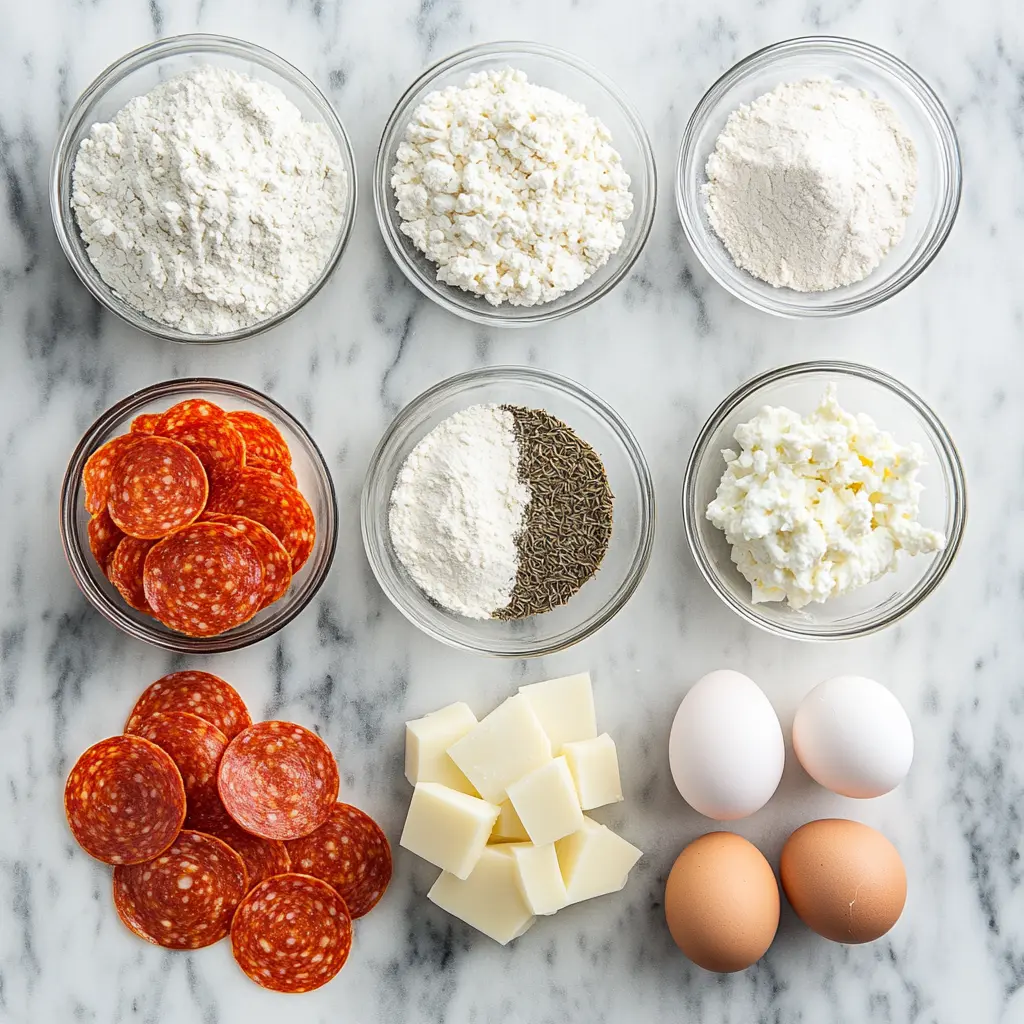
When it comes to making high protein cottage cheese pizza crust, the beauty is in its simplicity. You don’t need fancy tools or hard-to-find ingredients—just a few staples you probably already have. I always start with small curd cottage cheese, which blends easily and gives the crust a creamy texture. Low-fat or full-fat both work, but I usually reach for low-fat to keep things lighter. Eggs help bind everything together, while a bit of flour (all-purpose, whole wheat, or even gluten-free) gives the crust structure. Onion powder, garlic powder, and dried oregano add a punch of flavor that makes this high protein cottage cheese pizza crust anything but bland.
Here’s what you’ll need for one pizza crust:
| Ingredient | Amount |
|---|---|
| Cottage cheese (small curd, low-fat) | 1 cup |
| Eggs | 2 large |
| Flour (your choice) | 1/4 cup |
| Onion powder | 1 tsp |
| Garlic powder | 1 tsp |
| Dried oregano | 1/2 tsp |
| Black pepper (optional) | To taste |
If you want to see how I use similar ingredients in other healthy recipes, check out my Cottage Cheese Beef Sweet Potato Bowl or my Keto Cottage Cheese Egg Pizza Crust. Both are crowd-pleasers and keep the focus on flavor and nutrition.
Making high protein cottage cheese pizza crust is easier than you might think. Start by preheating your oven to 350°F and lining a sheet pan with parchment paper. In a large bowl, combine the cottage cheese, eggs, flour, and seasonings. Stir until you have a smooth, thick batter—no need to blend, just mix well. Spread the mixture onto your prepared pan, shaping it into a circle that’s not too thin. Bake for 25–30 minutes, until the edges are golden and the center is set.
Once your high protein cottage cheese pizza crust is baked, let it rest for a minute or two. This helps the crust firm up and makes it easier to add your favorite toppings. I love using a simple pizza sauce, a blend of low-fat cheeses, and turkey pepperoni, but you can get creative with veggies or even a sprinkle of chili flakes. If you’re looking for more topping inspiration, my Ultimate Ground Beef Sweet Potato Bowl is packed with ideas.

The result? A high protein cottage cheese pizza crust that’s sturdy, flavorful, and ready to be loaded up with whatever you’re craving. It’s a recipe that’s become a go-to in my kitchen, especially on busy nights when I want something quick, healthy, and satisfying.
High Protein Cottage Cheese Pizza Crust Nutrition: Why It’s a Game Changer
How Much Protein Is in High Protein Cottage Cheese Pizza Crust?
One of the biggest reasons I keep coming back to high protein cottage cheese pizza crust is the massive protein boost it delivers. Each serving of this crust packs about 40 grams of protein, which is a whopping amount compared to most traditional pizza crusts. That’s the kind of number that makes you feel good about pizza night, especially if you’re trying to build muscle, stay full longer, or just want a more balanced meal. The cottage cheese, eggs, and even the cheese you sprinkle on top all contribute to that high protein count.
For a deeper dive into how protein supports muscle growth and satiety, the Harvard T.H. Chan School of Public Health offers a helpful guide on the role of protein in a balanced diet.
If you’re curious about how this compares to other high protein meals, you might want to check out my Keto Cottage Cheese Pizza Crust or my Healthy Dinners. Both are easy ways to keep your protein intake high without sacrificing flavor or comfort.
Comparing High Protein Cottage Cheese Pizza Crust to Traditional Crusts :
Let’s talk numbers. A regular pizza crust made with white flour usually has around 6–8 grams of protein per serving, and it’s mostly carbs. In contrast, high protein cottage cheese pizza crust flips the script: you get 40 grams of protein, only 28 grams of carbs, and a satisfying 16 grams of fat (with just 8 grams saturated). That means you’re getting a meal that’s not only delicious but also keeps you full and energized.
Here’s a quick comparison:
| Crust Type | Protein (g) | Carbs (g) | Fat (g) | Calories |
|---|---|---|---|---|
| High Protein Cottage Cheese Pizza Crust | 40 | 28 | 16 | 421 |
| Traditional White Flour Crust | 6–8 | 36–40 | 4–6 | 250–300 |
The difference is clear: high protein cottage cheese pizza crust is a powerhouse for anyone who wants more from their pizza. It’s especially great for athletes, busy parents, or anyone who wants to feel satisfied after a meal. If you want more ideas for healthy swaps, my Viral Cottage Cheese Pizza Crust and Healthy Family Dinners are packed with inspiration.
High Protein Cottage Cheese Pizza Crust FAQs and Customization Tips :
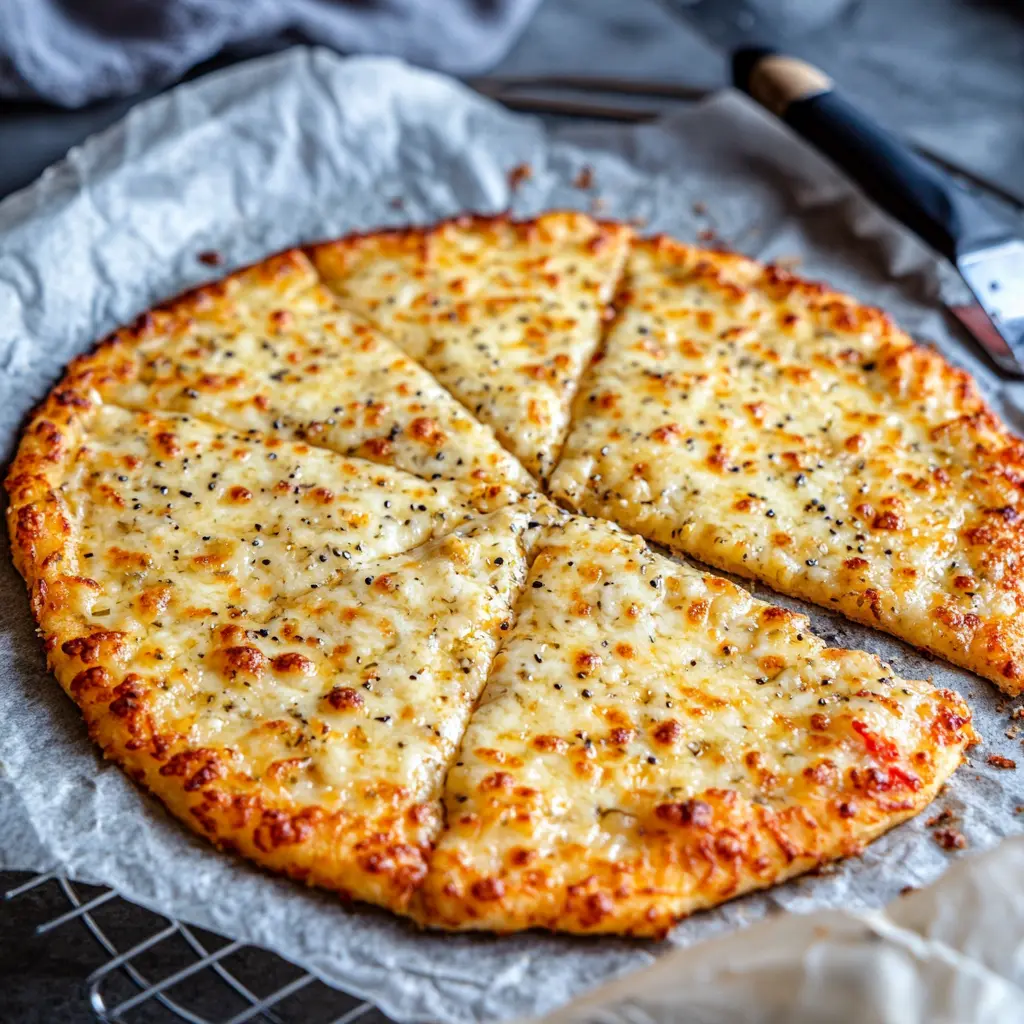
Can You Use Cottage Cheese for Pizza Crust?
Absolutely! Cottage cheese is the star of high protein cottage cheese pizza crust. Its creamy texture and high protein content make it a fantastic base for a sturdy, flavorful crust. When you mix cottage cheese with eggs and a bit of flour, you get a dough that bakes up golden and holds toppings beautifully. Even if you’re skeptical, give it a try—this high protein cottage cheese pizza crust surprises everyone with its taste and texture. If you’re looking for more ways to use cottage cheese, my Cottage Cheese Beef Sweet Potato Bowl are another protein-packed favorite.
How Many Calories and How Much Protein Are in a Cottage Cheese Pizza Crust?
A single serving of high protein cottage cheese pizza crust has about 421 calories and a massive 40 grams of protein. That’s a huge difference from traditional pizza crust, which usually offers far less protein and more empty carbs. This makes high protein cottage cheese pizza crust a smart choice for anyone watching their macros or wanting a meal that keeps them full. If you want to see how this fits into a balanced meal plan, check out my Main Dishes for more high protein ideas.
Is Cottage Cheese Good for Pizza?
Cottage cheese is not just good for pizza—it’s a game changer. It adds a subtle tang, keeps the crust moist, and boosts the protein content. Even if you’re not a cottage cheese fan, you’ll be surprised at how well it works in this high protein cottage cheese pizza crust. The flavor blends right in, and the texture is just right. For more creative pizza ideas, my Viral Cottage Cheese Pizza Crust is another fun twist on a classic.
How Much Protein Is in a Pizza Crust?
Traditional pizza crusts usually have 6–8 grams of protein per serving. In contrast, high protein cottage cheese pizza crust delivers a whopping 40 grams per serving. That’s a massive upgrade, especially if you’re looking to stay full and satisfied.
Tips for Customizing Your High Protein Cottage Cheese Pizza Crust :
The best part about high protein cottage cheese pizza crust is how easy it is to make it your own. You can swap in different flours—try oat flour for a nutty flavor or gluten-free flour if you have allergies. Toppings are totally up to you: turkey pepperoni, mushrooms, onions, or even a handful of arugula after baking. If you want a lower carb version, you can skip the flour, but keep in mind the crust will be softer. Letting the crust rest for a minute or two after baking helps it set and makes it easier to slice.
Conclusion :
High protein cottage cheese pizza crust is more than just a healthy swap—it’s a delicious, satisfying way to enjoy pizza night without the crash. With simple ingredients, easy steps, and a massive protein boost, this recipe is perfect for busy families, athletes, or anyone who wants to feel good about what’s on their plate. Don’t be afraid to make it your own with different flours or toppings. Trust yourself, have fun in the kitchen, and remember: great food is about sharing, not impressing. Pull up a chair, slice into your high protein cottage cheese pizza crust, and enjoy every bite.


